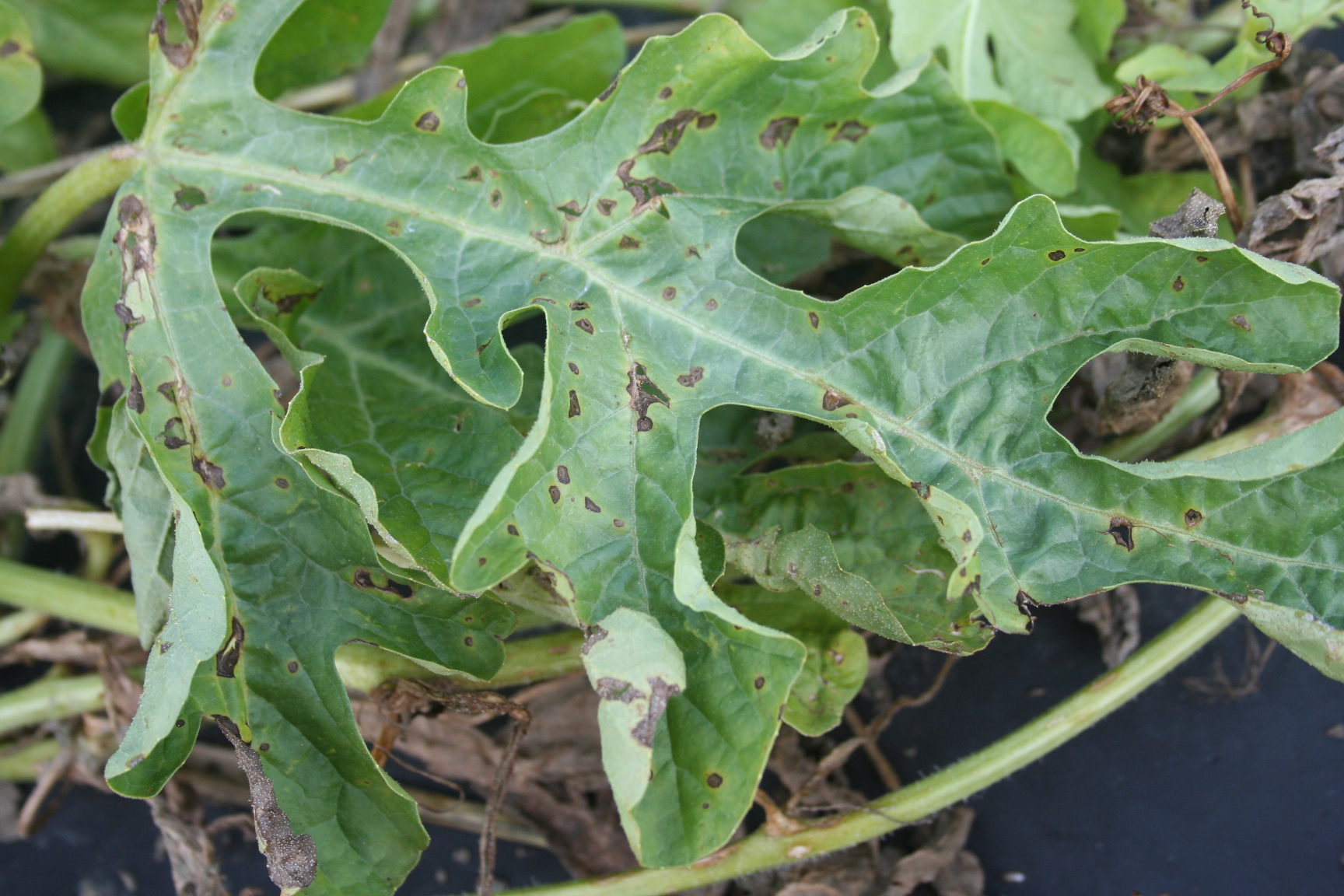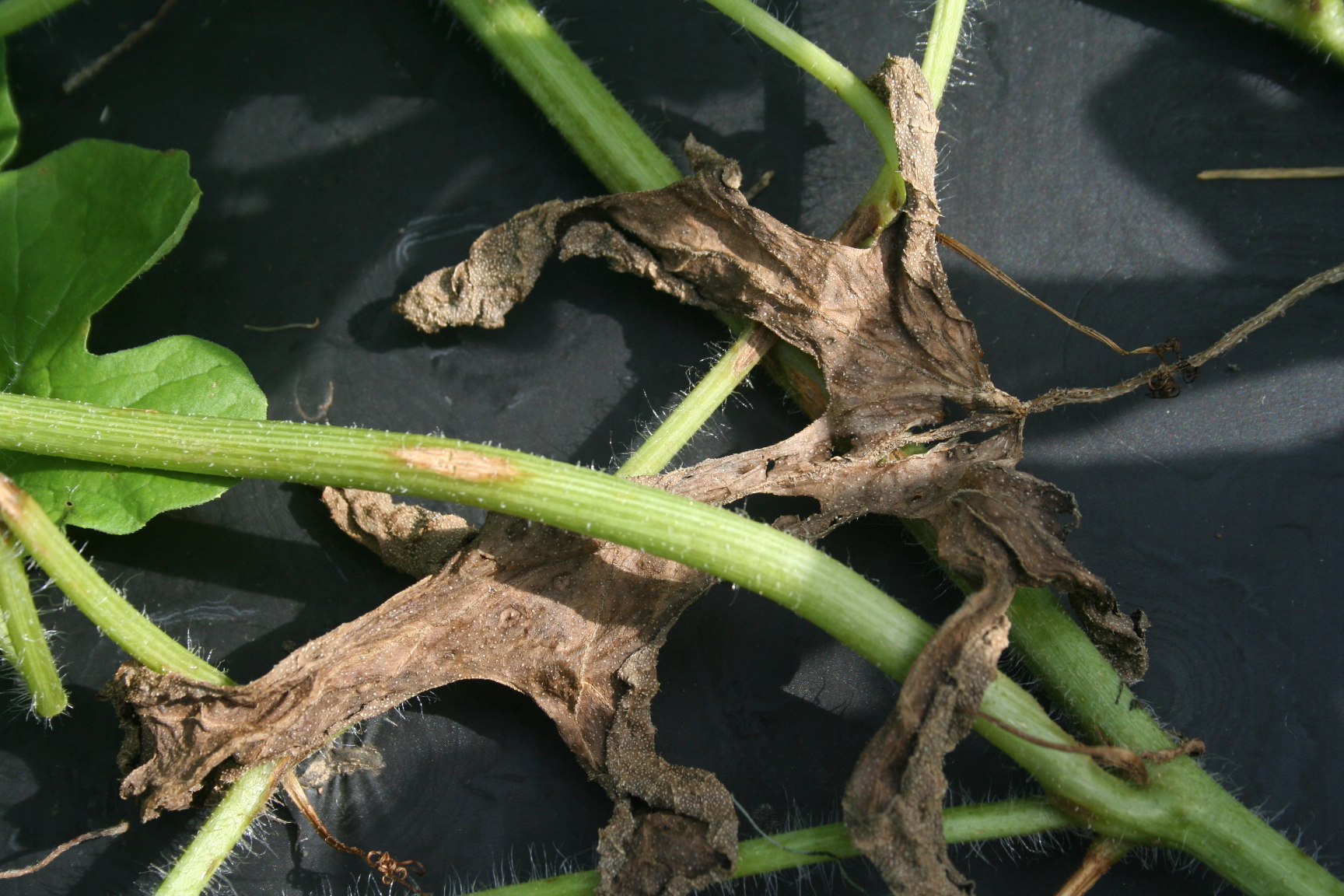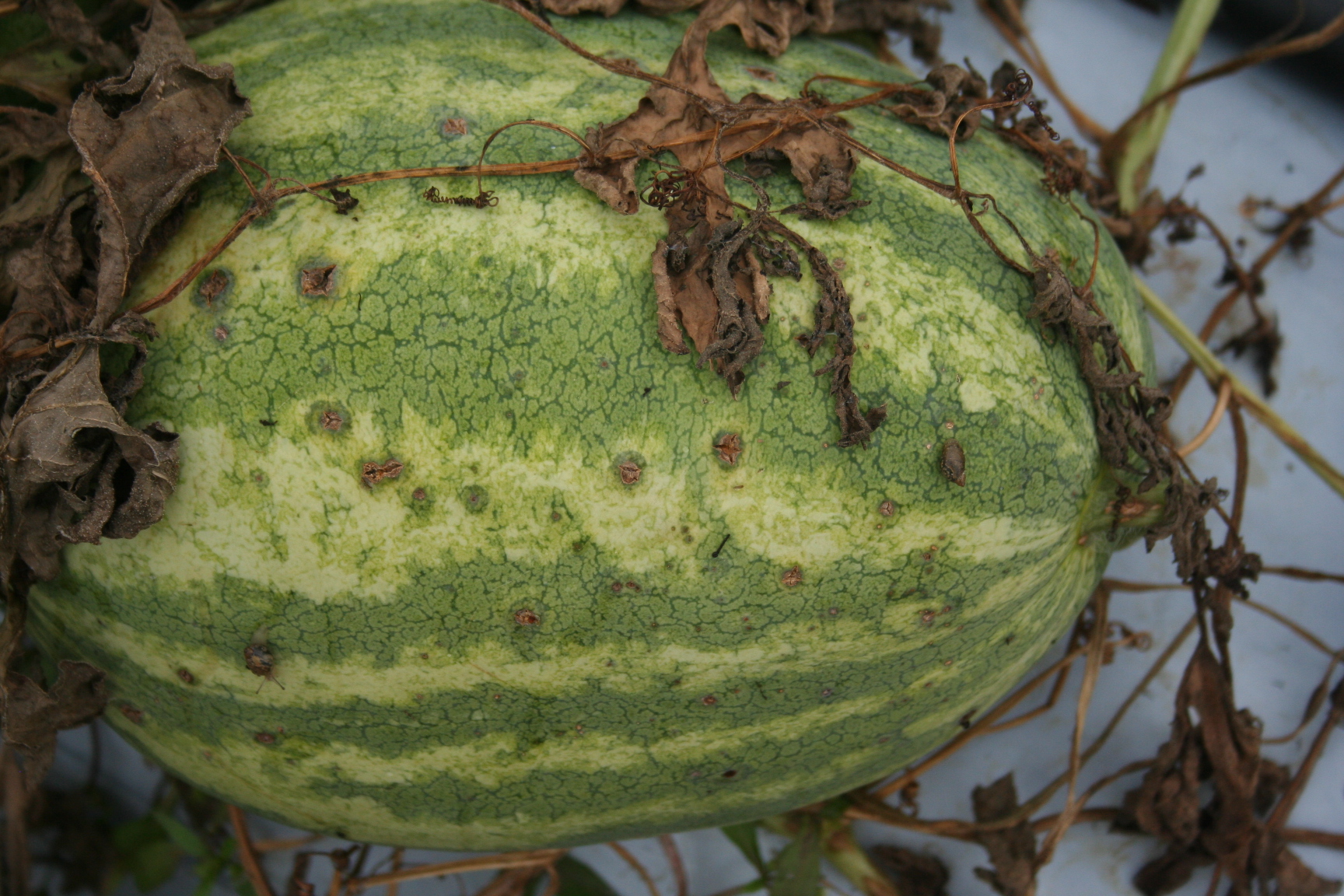News from South Carolina: Time to Scout Watermelons for Anthracnose
go.ncsu.edu/readext?300123
en Español / em Português
El inglés es el idioma de control de esta página. En la medida en que haya algún conflicto entre la traducción al inglés y la traducción, el inglés prevalece.
Al hacer clic en el enlace de traducción se activa un servicio de traducción gratuito para convertir la página al español. Al igual que con cualquier traducción por Internet, la conversión no es sensible al contexto y puede que no traduzca el texto en su significado original. NC State Extension no garantiza la exactitud del texto traducido. Por favor, tenga en cuenta que algunas aplicaciones y/o servicios pueden no funcionar como se espera cuando se traducen.
Português
Inglês é o idioma de controle desta página. Na medida que haja algum conflito entre o texto original em Inglês e a tradução, o Inglês prevalece.
Ao clicar no link de tradução, um serviço gratuito de tradução será ativado para converter a página para o Português. Como em qualquer tradução pela internet, a conversão não é sensivel ao contexto e pode não ocorrer a tradução para o significado orginal. O serviço de Extensão da Carolina do Norte (NC State Extension) não garante a exatidão do texto traduzido. Por favor, observe que algumas funções ou serviços podem não funcionar como esperado após a tradução.
English
English is the controlling language of this page. To the extent there is any conflict between the English text and the translation, English controls.
Clicking on the translation link activates a free translation service to convert the page to Spanish. As with any Internet translation, the conversion is not context-sensitive and may not translate the text to its original meaning. NC State Extension does not guarantee the accuracy of the translated text. Please note that some applications and/or services may not function as expected when translated.
Collapse ▲By Dr. Anthony P. Keinath, Vegetable Pathologist from Clemson University in South Carolina
Cucurbit anthracnose has shown up on watermelon at the Coastal Research and Education Center (CREC) in Charleston, SC. The field was cropped to watermelon in fall 2013, and that crop had severe anthracnose.
Early Outbreak
Why did anthracnose start this early in the season in this field? Most importantly, the severe anthracnose last fall guaranteed that plenty of spores would appear on infested crop debris this spring. Watermelon vines last at least 7 months, even when buried by tillage, and the anthracnose fungus probably lasts as long.
Anthracnose prefers the slightly cooler weather South Carolina has had during the past week. Temperatures between 64 and 81°F. are ideal for infection. Once the fungus gets into the leaves, it keeps growing as long as temperatures are 90°F. or lower.
Anthracnose also needs moisture. The recent, cooler nights with below average temperatures ensured a long, heavy dew period. Anthracnose can develop any time leaves are wet for 2 hours. When leaves stay wet for 12–24 hours, the risk of disease is much greater.
Symptoms
Anthracnose on watermelon starts as small, irregular, dark brown spots on leaves that are ¼ inch in diameter. These spots enlarge, more spots appear, and entire leaves are killed.
Next, 1-inch-long, narrow, tan-colored spots with brown margins and tapered ends appear on vines.
Finally, sunken, brown spots show up on the top and the bottom of fruit. Spots on the bottom are usually larger and deeper. The fruit spots may be covered with salmon-orange fungus growth.
Management
A spray trial I did in fall 2013 at Coastal REC showed that almost any fungicide with an active ingredient in Group 11 controls anthracnose. This list includes Cabrio, Pristine, Quadris, Quadris Top, and Luna Sensation. One of these fungicides should be sprayed as soon as anthracnose is found in a field.
Both mancozeb (Dithane, Manzate, or Penncozeb) and chlorothalonil (Bravo, Echo, Catamaran) help prevent anthracnose when sprays are started before the disease is found. Growers who have been following the South Carolina Watermelon Fungicide Guide are “ahead of the curve” at this point. If anthracnose shows up, the next scheduled spray should be a fungicide specifically recommended for anthracnose.
Biofungicides and fungicides approved for NOP organic certification do not control anthracnose.
Any field of watermelon (or muskmelon or cucumber) with anthracnose in 2014 should not be planted to any of these three crops until 2017. Two complete years are probably necessary for all of the anthracnose-infested crop debris to decay. Affected fields should be disked as soon as the last harvest is over. Fields with cucurbit anthracnose in the spring should never be double-cropped to another cucurbit in the fall, and the plastic mulch should not be reused for another cucurbit crop.





